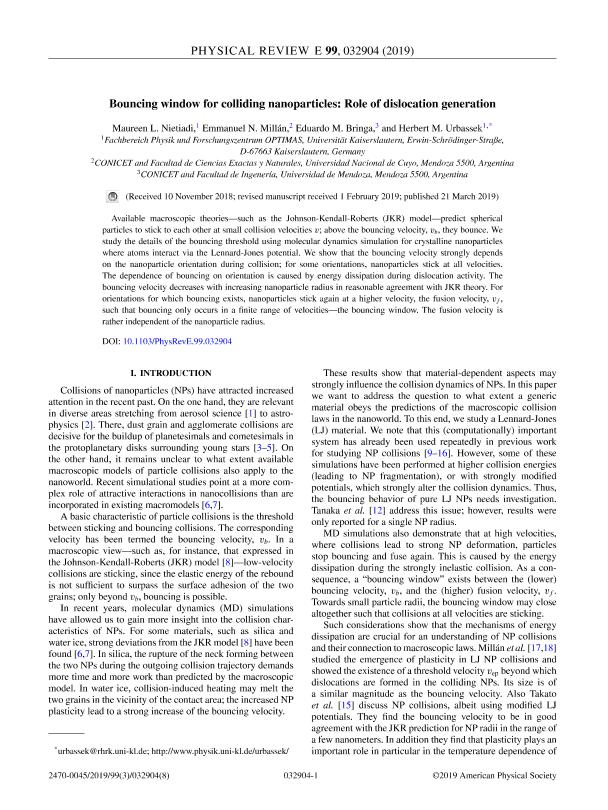Artículo
Bouncing window for colliding nanoparticles: Role of dislocation generation
Fecha de publicación:
03/2019
Editorial:
American Physical Society
Revista:
Physical Review E
ISSN:
2470-0053
Idioma:
Inglés
Tipo de recurso:
Artículo publicado
Clasificación temática:
Resumen
Available macroscopic theories—such as the Johnson-Kendall-Roberts (JKR) model—predict sphericalparticles to stick to each other at small collision velocitiesv; above the bouncing velocity,vb, they bounce. Westudy the details of the bouncing threshold using molecular dynamics simulation for crystalline nanoparticleswhere atoms interact via the Lennard-Jones potential. We show that the bouncing velocity strongly dependson the nanoparticle orientation during collision; for some orientations, nanoparticles stick at all velocities.The dependence of bouncing on orientation is caused by energy dissipation during dislocation activity. Thebouncing velocity decreases with increasing nanoparticle radius in reasonable agreement with JKR theory. Fororientations for which bouncing exists, nanoparticles stick again at a higher velocity, the fusion velocity,vf,such that bouncing only occurs in a finite range of velocities—the bouncing window. The fusion velocity israther independent of the nanoparticle radius.
Palabras clave:
NANOCOLLISIONS
Archivos asociados
Licencia
Identificadores
Colecciones
Articulos(CCT - MENDOZA)
Articulos de CTRO.CIENTIFICO TECNOL.CONICET - MENDOZA
Articulos de CTRO.CIENTIFICO TECNOL.CONICET - MENDOZA
Citación
Nietiadi, Maureen L.; Millán, Emmanuel Nicolás; Bringa, Eduardo Marcial; Urbassek, Herbert M.; Bouncing window for colliding nanoparticles: Role of dislocation generation; American Physical Society; Physical Review E; 99; 3; 3-2019; 32904-32904
Compartir
Altmétricas




